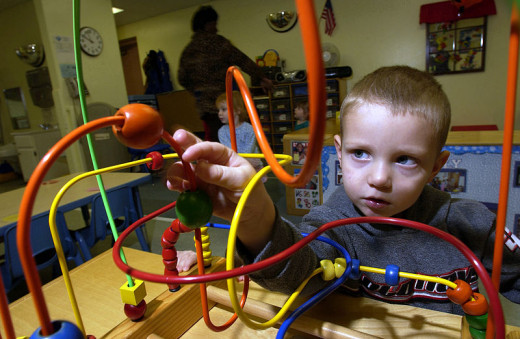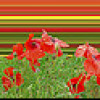Child Development Theories: Part 2
The Morale Welfare and Recreation Child Development Center.

The following theorists play an important role in education. School districts utilize Howard Gardner and Benjamin Bloom’s theories to stimulate student growth. This article will discuss how each theory affects child development.
Howard Gardner: Multiple Intelligence
Howard Gardner identified a theory of Multiple Intelligence (MI). “Gardner’s philosophy of multiple intelligence suggests that people can be “smart” in many ways.” (Morrison, 2004, p. 126) Howard Gardner’s multiple intelligence helps educators cater learning according to a child’s ability. In the first years of teaching, the writer relied heavily on Howard Gardner’s multiple intelligence theory among others. Howard Gardner “identified nine intelligences: visual spatial, verbal/linguistic, mathematical/logical, bodily/kinesthetic, musical/rhythmic, intrapersonal, naturalistic, and existentialist.” (Morrison, 2004, p. 127) Although the writer utilized Gardner’s MI theory on the elementary level, the field of early childhood can certainly benefit.
Infants and toddlers are beginning to explore life by utilizing various intelligences. For example, music and rhythm helps children to learn the alphabet, numbers, colors, phonics, and memorization. The writer still remembers the story of Humpty Dumpty and The Three Little Bears. Educators can effectively teach life lessons and developmental skills by focusing on how children learn. Naturalistic intelligence can be utilized by searching for items in nature. A walk around school, home, or a field trip can help children appreciate nature and strengthen learning ability. For example, a nature walk assignment can direct children to find things that are red, small, soft, or hard. Thus, educators will stimulate learning by utilizing several intelligences such as mathematical/logical, visual/spatial, and bodily/kinesthetic.
In addition, educators can encourage learners to orally describe experiences or objects. Therefore, learners will be utilizing verbal linguistic intelligence. Educational games that allow learners to collaborate within small groups and repeat observations or discuss a learning project can help reserved or shy children. Focusing instruction to multiple intelligences caters to the natural way a child learns. Similarly, adults learn in the same manner. Hence, educators are helping children become lifelong learners.
Benjamin Bloom: Taxonomy and Cognitive Domain
Benjamin Bloom: Taxonomy of Learning
Benjamin Bloom’s Taxonomy of Learning is another theory, which can be applied into the classroom. “This taxonomy consisted of six categories: (1) knowledge, (2) comprehension, (3) application, (4) analysis, (5) synthesis, and (6) evaluation ordered from concrete to abstract. “ (Walker, 2007, p.2) Bloom’s taxonomy theory directly affects instructional strategies. Early childhood professionals can use Taxonomy of Learning as a template or outline for teaching. For example, a lesson on frogs will provide children with facts or knowledge; afterward, a teacher can test comprehension through oral questions. Children can apply what is learned by creating an ecosystem where frogs live.
Educators can stimulate learning through analyzing the body of a frog, texture of skin, or the sound of a frog. Infants and toddlers naturally want to explore new and exciting subject matter: Especially, when subjects are presented in a way, which caters to the learners interests. Children enjoy projects that allow for creativity. Whether children paint a picture or mold a figure using clay, learners have a permanent sample or evidence of learning. According to an early childhood geography study, teachers “need to shift efforts toward map and spatial application.” (Walker, 2007, p. 6) Motivating children to apply what is learned can be challenging. Teachers need to determine which lessons children can make application. Therefore, establishing lesson objectives and activities can help educators monitor what is learned. Applying what is learned can be reinforced over time. For example, early childhood professionals can use colors and sounds that animals make to apply what is learned. In addition, children can evaluate or make comparisons of different animals.
Bloom’s taxonomy can be utilized in all grade levels. On the elementary level, lesson plans are structured using Bloom’s learning taxonomy. Each lesson requires teacher to provide knowledge on the topic and comprehension questions. Knowledge and comprehension is the basic learning stage. The goal is to motivate higher order thinking skills by motivating learners to make application, analyze, synthesize, and evaluate learning. Matching lessons across the curriculum to Bloom’s taxonomy can be challenging. For example, a lesson that introduces a challenging topic such as, identifying the author’s point of view will stimulate higher order thinking. A teacher may work on the same lesson plan for a week to reach all six levels of Bloom’s learning taxonomy. Children benefit from Bloom’s theory, because standardized testing questions were formulated to address each learning taxonomy. In a personal experience, educators saw increased academic growth by following Bloom’s taxonomy.
In conclusion, Howard Gardner’s multiple intelligence theory helps educators to cater learning the way children naturally learn. Gardner observed nine features of multiple intelligence such as musical, linguistic, and mathematical/logical. Educators can utilize Gardner’s theory to guide lessons and learning. Lastly, Benjamin Bloom’s Taxonomy of Learning lists six learning stages. Each learning stage enables educators to help learners develop higher order learning skills. The writer appreciates the above learning theorist and heavily relies upon Gardner and Bloom. Early childhood professionals need to find ways to implement aspects of learning theories across the curriculum. Admittedly, utilizing Gardner and Bloom’s theories was challenging. After several years of teaching, Bloom’s taxonomy was used to create and teach the curriculum. In addition, Gardner’s theory was used to set up activities, learning environment, and enhance learning strategies.
References
Morrison, G. (2004). Theories applied to teaching and learning: Foundations for practice. Early Childhood Education (9e), p. 268-302. New Jersey: Upper Saddle River
Walker, S. L. (2007). Early instruction in geography: An exploration in the ecology of kindergarten and first-grade geography education. Journal of Geography, 106(3), p. 123-131. doi:10.1080/00221340701615604









